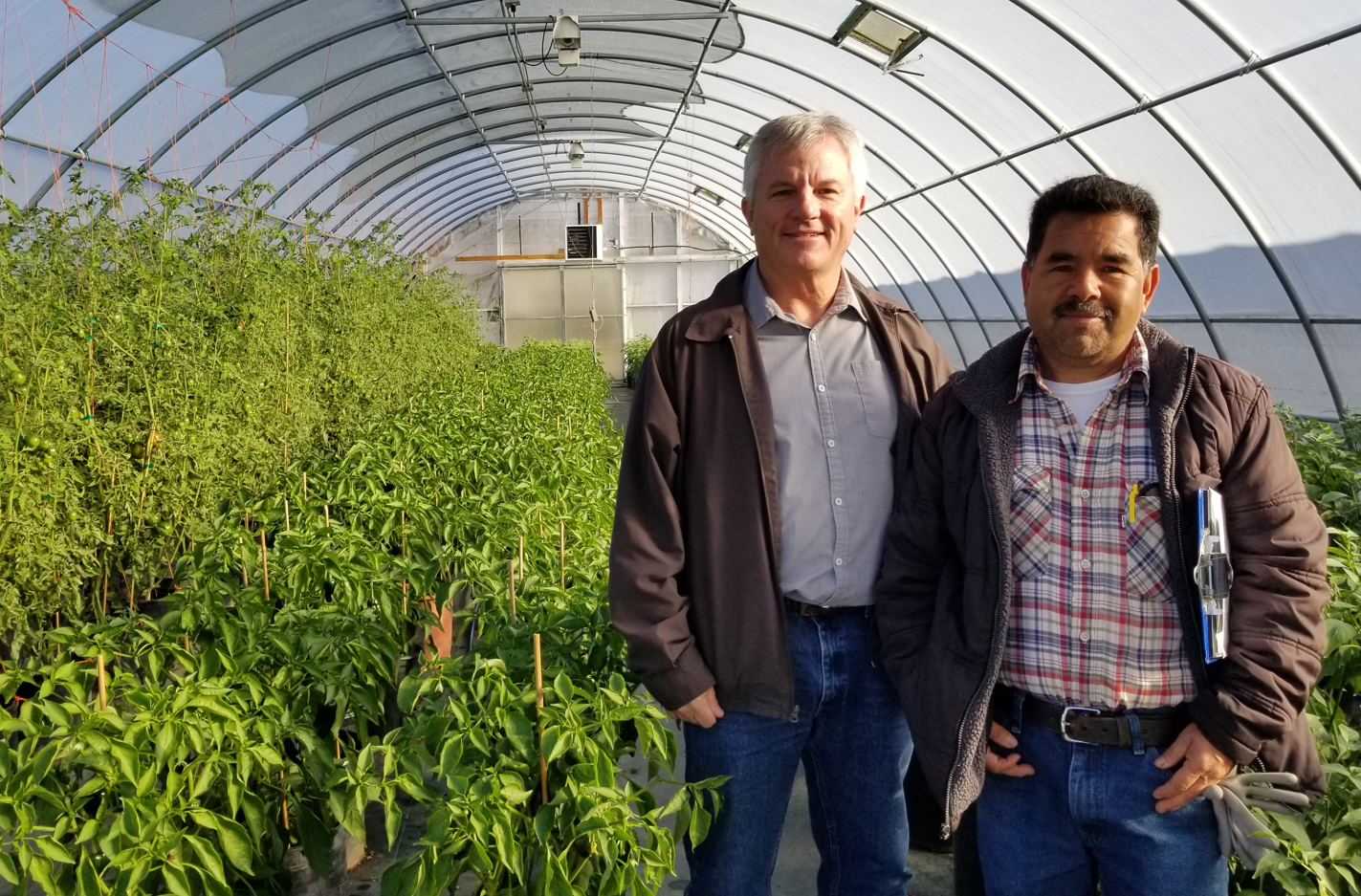The produce they get normally comes from grocery stores and farms, and it is not usually grown specifically for the food bank.
“We primarily produce grape vines and olive trees, and in the summertime, we have empty greenhouse space. And we have an employee base that doesn’t have a lot of work. So sometimes we are forced to lay people off or, you know, slow down our work,” said Jensen.
Jensen says a friend who sits on the Redwood Empire Food Bank board of directors suggested he contact the foodbank to see if there was a way to work together.
Smith says she and others from the food bank headed out to tour Novavine.
“We met his team and watched them do their work ‘cause they were in full swing of their grafting at the time, and talked about what the future might look like,” Smith said.
Jensen says the food bank needs, and his issues of downtime and worker retention, fit together like puzzle pieces.
“We’re running a pilot program this year where we’re using this greenhouse space to produce vegetables for the food bank," said Jensen. "And so what it’s doing is keeping our employees busy and it’s also contributing to the food bank and taking care of their constituents,” he continued.
Jensen and Benito Vasquez, greenhouse manager at Novavine, describe the kinds of foods being grown for the Redwood Empire Food Bank.
“So right now we’re in what we call a hoop house. How many plants if you had to guess," Jensen asked Vasquez.
"We got about 200, 250 tomatillo plants and we’ve got about 200 plants of tomatoes here in this house," Vasquez responded.
"And then we have another house, we can walk over there. We got peppers, jalapeno peppers, we got about, I’d say 200 of each variety so far right now… and cilantro,” explained Vasquez.
Jensen walks us to the three hoop houses used for the pilot program, covering about 6-thousand square feet.
“So a different type of tomato, and then we have the jalapenos, and the..." said Jensen, looking to Vasquez. "Pasilla," answered Vasquez. "Pasilla," confirmed Jensen.
The warm, peppery air from the hoop house prompted me to comment, "Smells good in here," which made everyone laugh.
Smith says she thinks the ability to get locally grown, culturally-appropriate food during the off-season is incredible.
“When we survey our clients and ask them what they really want to receive from us, those are at the top of the list. And it’s not always readily available in our normal channels. So for Jay and his team to grow the things that the community is asking for – it couldn’t be more perfect," said Smith.
She says they are also able to use their existing logistics to collect the food from Novavine.
“We can send out our refrigerated vehicles with pallets and crates and all the things that they need. They just need to harvest it, and we can supply all the logistics to get it back over here. And the produce is beautiful!” exclaimed Smith.
Jensen says if all goes well, he hopes to expand the program to grow more food and employ more of his workers. He says this year Novavine is donating the funds to grow the food and pay the workers.
“There is an opportunity to maybe find a grant or something that will help us just cover our costs. That’s all we’re trying to do here is just, to have it be a win-win. If we can cover our costs, and the foodbank can get, you know, some nice product, especially in the off season, I think it works out well for both people," said Jensen.
As the program is fleshed out this year, Jensen says he's thinking of ways to expand it.
“There’s lots of volunteers with the food bank. I mean, maybe we would be doing a harvest here once a week, asking for volunteers to help us harvest. I mean, we don’t really know what the program’s gonna look like, but that’s kind of the fun of it, too," Jensen said.
Smith says that they will be looking for grants to continue the program. And it's also potentially a model that could be shared outside of Sonoma County.
“We can put this into a blueprint model and share it across certainly our food bank network, but also," Smith said. "I’m not sure whose Jay’s network is, but we will certainly be talking a lot about this. It would be fantastic to replicate this across the country," she continued.
So far, Smith says the food bank has received one-thousand pounds of produce from the pilot program.
 Jay Jensen, CEO, and Benito Vasquez, Greenhouse Manager of Novavine, standing in one of the three hoop houses with produce grown specifically for the Redwood Empire Food Bank
Jay Jensen, CEO, and Benito Vasquez, Greenhouse Manager of Novavine, standing in one of the three hoop houses with produce grown specifically for the Redwood Empire Food Bank
 Live Radio
Live Radio




